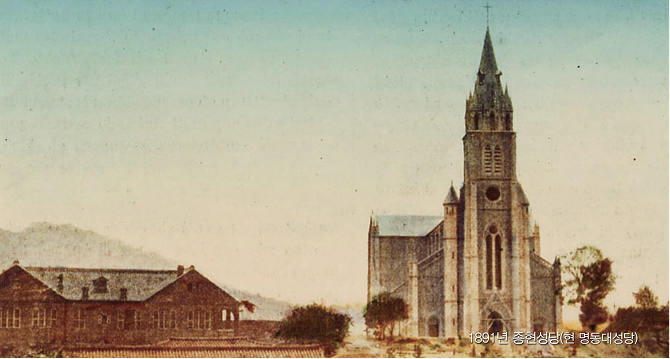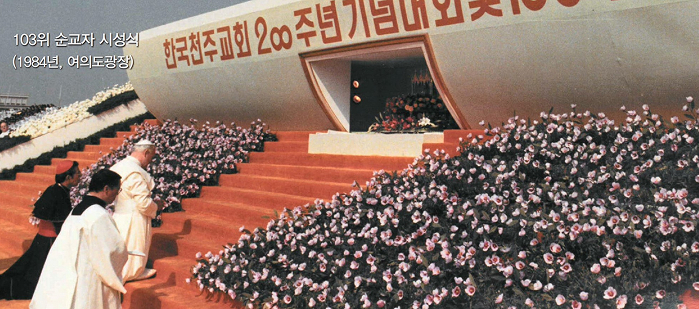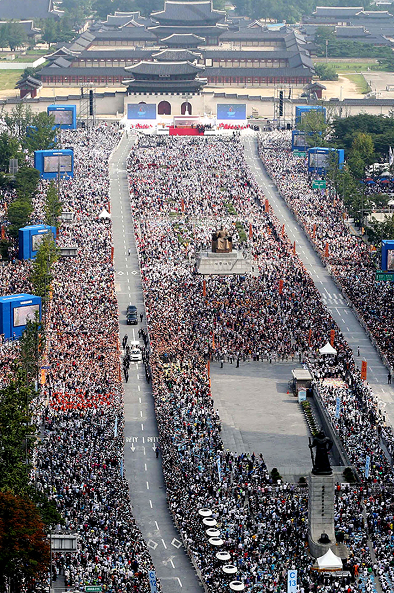Despite these challenges, the faith endured and continued to grow. In 1831, the Apostolic Vicariate of Chosun was established, marking the beginning of an official Church structure in Korea. In 1845, St. Andrew Kim Taegon was ordained as the first Korean priest. In 1984, on the 200th anniversary of the Korean Church, St. John Paul II visited Korea and canonized 103 Korean martyrs in the first canonization ceremony held outside the Vatican. Finally, in 2014, Pope Francis’s visit to Korea marked his first official apostolic visit to Asia, where he presided over the beatification of 124 Korean martyrs.
The Catholic Church in Korea
The Catholic Church in Korea: Founded by the Laity
The Catholic Church in Korea began with lay people, especially scholars, who longed for the truth. It is the only country in which the Church was formed domestically without the missionary activities of foreign clergy. The catechism “Tianzhu Shiyi” (The True Meaning of the Lord of Heaven), written at the beginning of the 17th century by Matteo Ricci, an Italian Jesuit missionary in China, had a particularly noteworthy influence on the establishment of Catholicism in Korea.
With no priests at first, the early Church in Korea was led by lay believers who gathered in secret, studied scripture, and lived out the Gospel. However, the growth of the faith was met with severe persecution. At the heart of this resistance were deep contrasts between Catholic teachings and Confucian values—particularly regarding the Church’s radical teaching that all people are equal in the eyes of God, which stood in stark opposition to the rigid Confucian social hierarchy. The prohibition to practice ancestral rites also fueled widespread suspicion and hostility. Of the four waves of persecution spread over one hundred years, the Byeongin Persecution of 1866 was the worst, with around 8,000 Catholics being martyred for their beliefs.

Jonghyeon Church
(Myeongdong Cathedral), 1891
Canonization of 103 Korean Martyrs, Yeouido Plaza, 1984


Pope Francis in Korea, 2014
The spiritual ancestors of the Church in Korea upheld the faith without fear of death, even in the face of severe persecution. While they could have reunited with their families and regained their lost honor and wealth by renouncing their belief, they chose to embrace suffering and death to reveal the love of Jesus, practice love as He taught, and obtain eternal life. Built on the blood of martyrs, the Korean Church shines today as a light of hope for the Gospel in Asia.